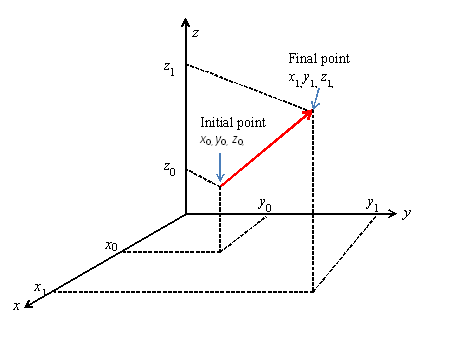|
Constructors
|
public VectorMaths(double xCoordinate, double yCoordinate, double zCoordinate)
|
|
public VectorMaths(double xCoordinate, double yCoordinate)
|
|
public VectorMaths(double xCoordinate)
|
|
public VectorMaths(double[] coordinates2)
|
|
public VectorMaths(double[] coordinates1, double[] coordinates2)
|
|
public VectorMaths(Point coordinates2)
|
|
public VectorMaths(Point coordinates1, Point coordinates2)
|
|
Reset the coordinates
|
public void setVector(double xCoordinate, double yCoordinate, double zCoordinate)
|
|
public void setVector(double xCoordinate, double yCoordinate)
|
|
public void setVector(double xCoordinate)
|
|
public void setVector(double[] coordinates2)
|
|
public void setVector(double[] coordinates1, double[] coordinates2)
|
|
public void setVector(Point coordinates2)
|
|
public void setVector(Point coordinates1, Point coordinates2)
|
Return the points
|
public Point[] getVector()
|
|
public Point getInitialPoint()
|
|
public Point getFinalPoint()
|
|
public int getDimensionsEntered()
|
|
Deep copy
|
public VectorMaths copy()
|
|
Addition
|
public VectorMaths plus(VectorMaths vec2)
|
public static VectorMaths plus(VectorMaths vec1, VectorMaths vec2)
|
public void plusEquals(VectorMaths vec2)
|
|
Subtraction
|
public VectorMaths minus(VectorMaths vec2)
|
public static VectorMaths minus(VectorMaths vec1, VectorMaths vec2)
|
public void minusEquals(VectorMaths vec2)
|
|
Multiplication by a scalar
|
public VectorMaths times(double constant)
|
public static VectorMaths times(VectorMaths vec1, double constant)
|
public void timesEquals(double constant)
|
|
Dot Product
|
public double dot(VectorMaths vec2)
|
public static double dot(VectorMaths vec1, VectorMaths vec2)
|
|
Cross Product
|
public VectorMaths cross(VectorMaths vec2)
|
public static VectorMaths cross(VectorMaths vec1, VectorMaths vec2)
|
|
Length
|
public double length()
|
public double magnitude()
|
public double norm()
|
|
Angle between two vectors
|
public double angleDegrees(VectorMaths vec2)
|
public static VectorMaths angleDegrees(VectorMaths vec1, VectorMaths vec2)
|
public double angleRadians(VectorMaths vec2)
|
public static VectorMaths angleRadians(VectorMaths vec1, VectorMaths vec2)
|
|
Equality test
|
public boolean isEqual(VectorMaths vec2)
|
public static boolean isEqual(VectorMaths vec1, VectorMaths vec2)
|
|
Convert to Phasor
|
public Phasor toPhasor()
|

